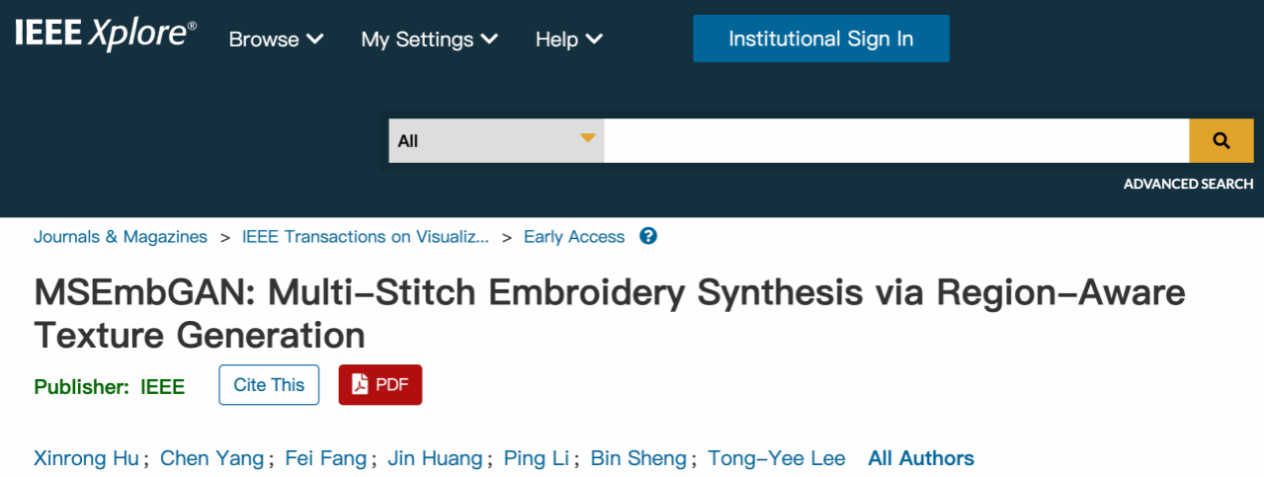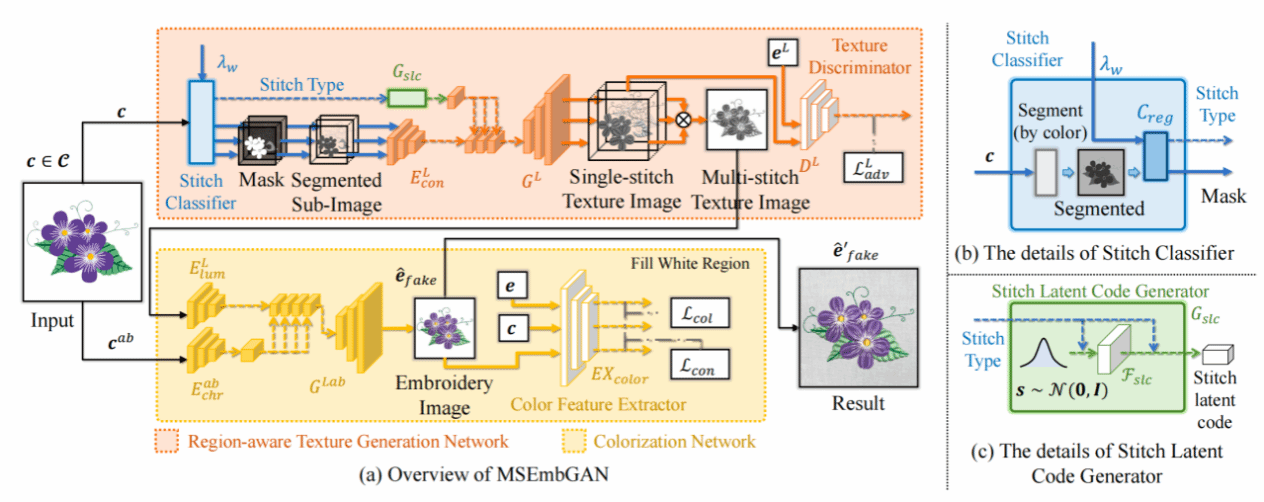In recent years, Convolutional Neural Networks (CNNs) have demonstrated strong capabilities in tasks such as image classification, object detection, image generation, and style transfer. Researchers have begun to explore using CNNs to synthesize embroidery features in images.
However, due to the complexity of embroidery stitches, textures, and three-dimensional effects, as well as the inclusion of tiny details and irregular patterns, CNNs face limitations in synthesizing embroidery features. For instance, they cannot predict different types of stitches, making it difficult to effectively extract stitch features and generate coherent and natural embroidery patterns. Consequently, designers still need to manually select and adjust stitch types and their corresponding colors—a process that often requires a significant amount of time to achieve the desired effect.

To address this issue, the research group led by Professor Hu Xinrong from the School of Computer Science and Artificial Intelligence proposed a multi-stitch embroidery Generative Adversarial Network model named MSEmbGAN. MSEmbGAN improves key aspects such as texture realism and color fidelity in embroidery, becoming the first GAN model based on CNNs to successfully predict embroidery features. The research results, titled MSEmbGAN : Multi-Stitch Embroidery Synthesis using Region-Aware Texture Generation, have been accepted by the IEEE Transactions on Visualization and Computer Graphics (TVCG). Wuhan Textile University is the first author affiliation, and Professor Hu Xinrong from the School of Computer Science and Artificial Intelligence is the first author. TVCG is a top-tier journal in the field of computer visualization, classified as a Q1 journal by the Chinese Academy of Sciences and listed as an A-level journal by the China Computer Federation (CCF).

The research group created over 30,000 images using professional embroidery software (Wilcom 9.0), including embroidered images and their corresponding content images. All images have been adjusted to a resolution of 256×256 pixels. The multi-stitch embroidery dataset will be open-sourced, contributing to other researchers in this field. The MSEmbGAN model first identifies the stitch types within regions of the input image, generates corresponding embroidery textures based on the identified stitch types, and finally optimizes the overall color of the result. To achieve these functions, the research group proposed two sub-networks: the Region-Aware Texture Generation Network and the Colorization Network.

